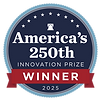School choice to reshape Wyoming students’ education
- Marta Mossburg

- Jun 3, 2025
- 3 min read

Wyoming residents are speaking loudly in support of school choice. In the first two weeks that residents could apply to receive $7,000 allotment per student under the Steamboat Legacy Scholarship Act--signed into law March 4 -- the Wyoming Department of Education received 3,484 applications, which includes 164 for Pre-K.
Wyoming is one of multiple states this year, including Tennessee and Texas, that enacted education savings accounts to give parents more choice about where and how to educate their children. Other school choice options were also adopted nationally this year like Idaho’s new education choice tax credit.
Under Wyoming’s law, parents can use the money for tuition and fees at a private school, costs for college admission tests and AP exams, tutoring services, textbooks and curriculum for homeschooling and other expenses. As part of the program, children must take core subjects and take annual state or nationally recognized assessments. The state is one of 35 nationally plus Washington, D.C., that have some form of educational choice.
If the Republicans’ “One Big Beautiful Bill Act” passes the Senate in Congress, state residents will have more opportunities to apply for scholarships. The tax and spending legislation would create a nationwide scholarship program to provide money to families in all 50 states. Similar to the state program, it allows parents to use scholarships for private or parochial school tuition, books, tutoring, online classes and other expenses. If passed, it would create $5 billion annually in tax credits for those who donate to scholarship programs.
This should encourage those interested in starting alternative schools to prepare to launch. The Wyoming Department of Education is crafting a certification process and will publish it here when complete. It should also encourage parents who have wanted to home school but didn’t think they could afford it to reevaluate their budgets and priorities. And hopefully it will also spur more people and businesses in Wyoming to consider giving to nonprofit scholarship organizations on principle and for the potential tax benefit. The goal should be to create alternatives where students thrive regardless of their skin color or economic background.
The inaptly named Wyoming Education Association, which advocates for greater public school funding – not educational achievement, has criticized the legislation and says it will “disproportionately harm rural students and communities” by taking money away from local public schools, as if they are the only appropriate way to educate children.
As the number of people applying for scholarships shows, parents don’t think so. Neither do scores from the National Assessment of School Progress, which show that the majority of 4th and 8th graders in Wyoming are not proficient in math and reading. The on-time high school graduation rate has remained about 80 percent, as it has since the 2015-2016 school year. That is lower than the nation’s average of 87 percent, but the bigger question is what do those students who graduate actually know?
Nationally, 18 percent of students entering four-year institutions after high school need to take remedial classes. The percentage soars to 48 percent at two-year institutions, according to The National Center for Education Statistics. Remedial courses don’t count toward graduation. According to the 2022 Post-Secondary Education College Readiness Research report on Wyoming students, “Researchers found that 45.8% of (all) the degree seeking students were enrolled in developmental coursework. Furthermore, we determined that these students were less likely to successfully complete degree programs and coursework and more likely to drop out.”
When broken down by institution, the study found that 20.5% of University of Wyoming students were not college ready and 51.7% of students enrolled at Wyoming community colleges were not college ready.
Those statistics make it imperative to improve K-12 outcomes in Wyoming. And as research from Mountain States Policy Center shows, education-freedom opportunities like the Steamboat Scholarships boost both student achievement and public school performance.
May this new era of education choice in Wyoming and throughout the United States renew our commitment as a nation to put students, not systems, first.







Comments